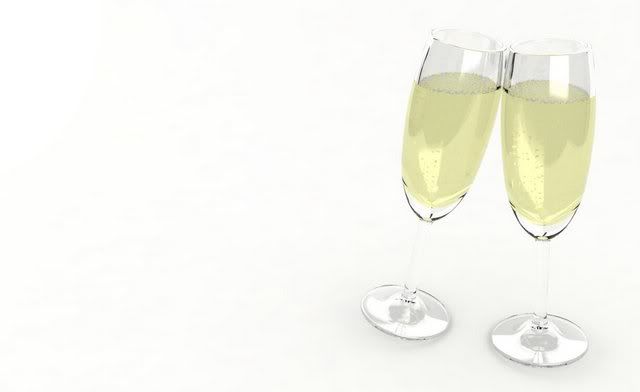I am trying to make a champagne material and I would like to have alot of bubbles inside of it. I noticed that the material tester ball has bubbles in it on the material download site and, I thought it was the material but is it just the test ball? Is there an effective way to make this?
Announcement
Collapse
No announcement yet.
Bubbles?
Collapse
X
-
Re: Bubbles?
Well, as you found out with the tester scene, your going to have to make the bubbles. I'll start from you already having the bubbles that you want in the champagne (cause thats a modeling thing that I'll get to towards the end) cause everything after that is going to be more vray specific stuff.
Making the bubbles work.
So now that you have all of your bubbles together and the volume for liquid, you will have to mesh them all. I would select all of the bubbles first and then mesh those. After you've meshed all of the bubbles then you will need to flip the normals of the bubbles so that they are pointing inward...you can do this by just typing flip. Then grab the mesh of the liquid and join the liquid and the bubbles. As far as your materials goes, there's nothing special needed, just a regular refractive material with some fog.
This process is needed for one main reason and two reasons that are off shots of that. The main reason for all of this that V-ray needs an entrance surface and an exit surface for proper refraction. That means the bubbles are actually an exit surface rather then an entrance surface...this is why the normals need to point inwards as opposed out. So the two off shots is that 1) Rhino can't join NURBS surfaces unless they are touching, which the liquid and bubbles don't. It can however do this with a mesh. 2) Rhino also can't flip the normals of a closed surface/polysurface. This means that even if we could join nurbs that don't touch, we wouldn't be able to flip the normals of the bubbles which would not create what we need.
Micha brought all this up a little while back, and there is a bit more indepth explanation and a few examples as well. It goes on for a number of posts, but hopefully that will explain things more if you need it.
Here's the start of it: http://www.asgvis.com/index.php?opti...11201#msg11201
Actually making the bubbles
So now that you know how to make the bubbles work, here's a way to make them (not the only one by any means), assuming you haven't already. So the first thing I would start out with is making some curves that are within the liquid and rise up to the top. I'd make a few that branch and have some slight waviness to them. Next we are going to make a sphere (this could be a mesh sphere with the normals already pointing in if you wanted to save yourself a step later) that is a medium size for your bubbles. After we've got that sphere, just place it at various distances allong those curves. I think they should be kind of close, but use whatever spacing you'd like. The last step in the bubbles is to make them all slightly unique. For that I would use David Rutten's Quantum Transform tools. There's one in there called QuantumBloat3D, so select all of the bubbles and start the command. There are two key options that you'll want to make sure are set...the first is that Local is enabled. Local will scale from each object's center point as opposed to the point you picked. The second is AllowNegative. This will allow your objects to go smaller as well as bigger. So thats my suggestion of how to make the bubbles themselves. Hope it was helpful
One last, but possibly very important note. You will probably need a much higher Max reflection depth, since allot of those bounces/rays are going to get "eaten up" by your bubbles. EnjoyDamien Alomar<br />Generally Cool Dude
-
Re: Bubbles?
Heres is where i am so far.
paste link for larger images

http://i234.photobucket.com/albums/e...champagne2.jpg

http://i234.photobucket.com/albums/e.../champagne.jpg
Comment
Comment